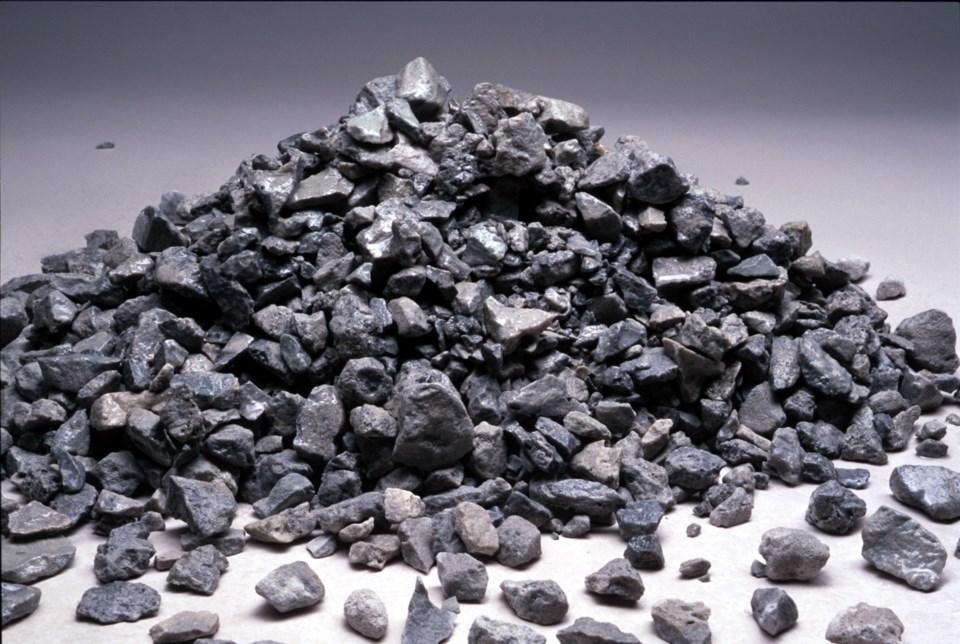If there’s a silver lining to the second aggregate wash facility in Tiny, it’s that it's made of geosynthetic material.
Tiny council received a presentation from consultants R.J. Burnside & Associates Ltd. during a recent regular meeting, which provided a peer review of an Environmental Compliance Approval (ECA) application for the Sarjeant Company Ltd. owned Waverley Pit No. 2 wash water facility, located at 1379 Baseline Road South.
The proposal for a new ECA application to the Ministry of Environment Conservation and Parks (MECP) was posted to the Environmental Registry of Ontario (ERO) on November 1 with a 45-day period to accept comments.
In a closed loop aggregate wash plant, fully recycled water supplied from two source ponds passes through extracted aggregate so sand and gravel remain while a slurry of finer materials like silt and clay fall into a series of sedimentation ponds.
Gravity moves clean water into a clear water pool for re-use by the wash plant, and is labelled as processed water accordingly. However, that designation as processed water means that the MECP considers the wash ponds to be sewage works as part of an industrial sewage plant.
“One of the things that’s different from the Teedon application for the ECA is that these ponds are going to be lined,” explained David Hopkins, senior hydrologist with Burnside, who summarized the “industrial sewage works - closed loop aggregate wash plant” application for council.
Burnside looked at the application, submitted this summer by Harden Environmental Services Ltd. to the MECP, and found numerous instances where clarification should be provided.
Definition of Source Pond A in location, size, and post-aggregation usage was requested. As no data was provided to support the need for two ponds, a request for rationale for the ponds was also given. As extraction will occur throughout the property at various times, the movement of the ponds accordingly also required more detail due to the material removed and stored, and the replacement of the linings with each move.
A “significant portion of the site” intended for below water table extraction would not be suitable for locations of the ponds specified as at least 1.5 metres above the water table, and Burnside requested details in that regard.
Coun. Cindy Hastings took a moment to remind the public that the presentation was to allow council to provide additional comments along with the consultant’s findings before the deadline.
“We’re a commenting agency with regards to this application,” affirmed Hastings. “We don’t have any control over this. We’ve asked (Burnside) to comment on behalf of us and we’ll send it into the (MECP), but this is not something that we’re making a decision on.”
Deputy Mayor Steffen Walma noted that in speaking with a representative of Sarjeant Company Ltd., the interests of Tiny residents were taken into account.
“They’ve obviously watched the on-goings of (the Teedon Pit) operation and some of the concerns,” remarked Walma. “One of the things they’ve noted is the rationale in going for a shallow pond; they didn’t want to access the deep (Alliston Aquifer). They wanted to stay above the aquitard into that shallow aquifer.”
Coun. Gibb Wishart shared that many of his questions toward the ECA application had been addressed by Burnside for clarification, adding that “this whole thing is happening in the wrong place in the world.”
Wishart inquired about the expected leakage from the ponds, which Hopkins replied would occur due to evaporation over hot summers as well as through the natural liner atop the aquifer.
Said Hopkins, “They don’t anticipate they’re going to lose a lot of leakage, because basically they’re going to line those off the bat. They’re going to lose some because it’s a natural liner but it should be fairly minimal.”
“Should be,” responded Wishart.
Hastings requested that a council comment for the addition of a geosynthetic liner in the ponds be included alongside Burnside recommendations, which the other council members supported.
Regarding the liner, Hopkins explained that the only impact of leakage through the bottom of the sedimentation pond would be that the plant would use more water, as silt cannot physically travel far through lining material.
“The furthest it would go would be out the bottom, go through that sand and gravel, and would hit that aquitard and that’s where it would stop,” said Hopkins. “But in this case, they’re willing to put in that liner just to reassure the public that that’s not going to be an issue.”
Coun. John Bryant shared the same concern that many Tiny residents have voiced in regards to the Teedon Pit as well as Site 41 before it.
“I’m just thinking about the other pits that you’re mentioning, whether or not they’re sitting on top of an aquifer,” said Bryant, “and I just find it a little disconcerting about building stuff directly above an aquifer with the constant moving of soils on a continual basis.
“The real concern is that getting down into the aquifer and causing other greater problems,” Bryant added.
Council carried the motion and the Burnside recommendations with additional comments was submitted before the December 16 deadline.
The Burnside recommendation letter with Waverley Pit No. 2 overview can be found as part of the agenda through the township website.
Archives of council meetings are available to view on Tiny Township’s YouTube channel.



